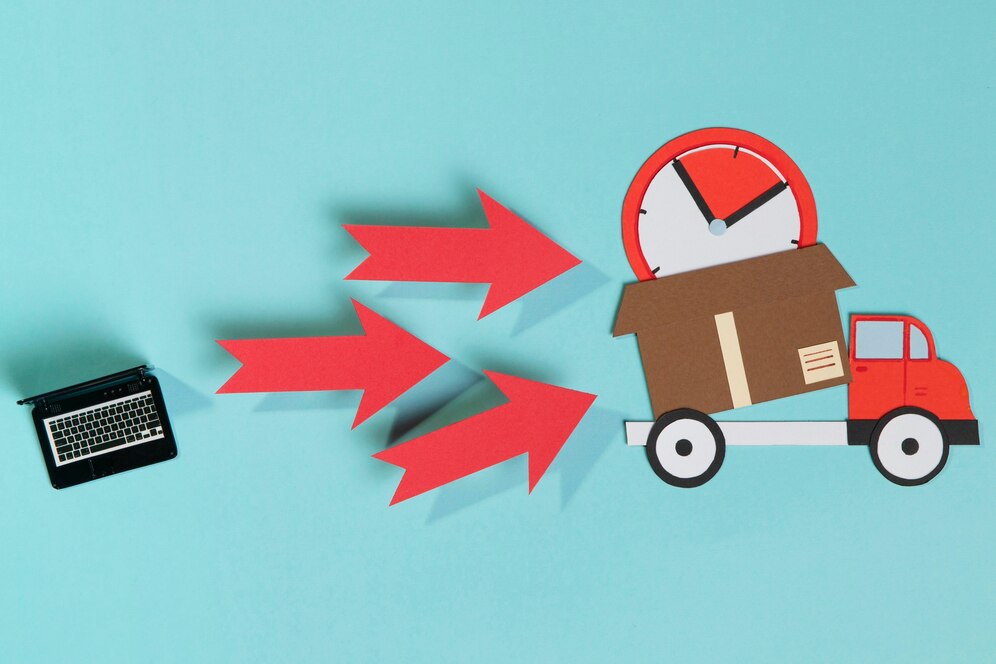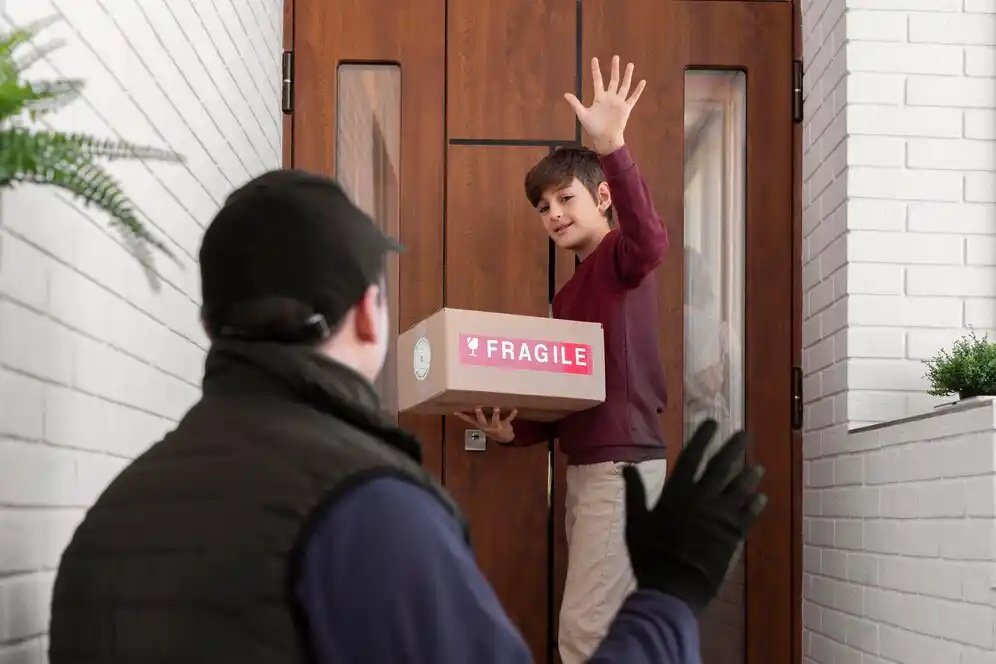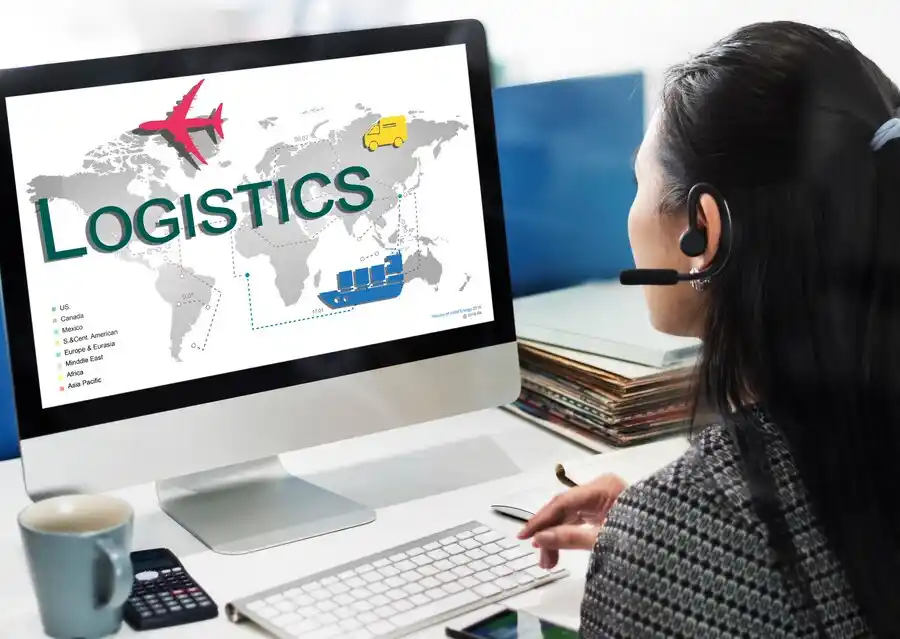
How to Improve Last-Mile Delivery Efficiency
In today’s fast-paced retail environment, last-mile delivery is one of the most crucial elements of logistics. It directly impacts customer satisfaction, brand loyalty, and operational costs. With increasing consumer expectations for fast shipping strategies, retailers must optimise their last-mile logistics to ensure efficiency.
This guide explores last-mile delivery solutions, best practices, and technologies that enhance retail logistics optimisation while reducing costs and improving the customer experience.
1. Understanding the Importance of Last-Mile Delivery

a) What is Last-Mile Delivery?
Last-mile delivery refers to the final leg of the shipping process, where goods are transported from a distribution hub to the customer’s doorstep. It is often the most expensive and time-consuming part of the supply chain.
b) Challenges in Last-Mile Delivery
- High Costs: Last-mile logistics account for up to 53% of total delivery costs.
- Inefficient Routing: Poor planning leads to delays and increased expenses.
- Traffic Congestion: Urban areas face delivery bottlenecks.
- Failed Deliveries: Incorrect addresses or customer unavailability cause returns.
- Sustainability Concerns: Excessive fuel consumption increases carbon footprints.
2. Last-Mile Delivery Solutions for Retailers
a) Implementing Route Optimization Software
- Use AI-driven tools like Onfleet, Routific, and OptimoRoute to reduce delivery times.
- Plan dynamic delivery routes based on traffic, weather, and road conditions.
- Minimise fuel consumption by clustering deliveries within close proximity.
b) Leveraging Local Warehouses & Micro-Fulfillment Centers
- Use urban warehouses to store high-demand products closer to customers.
- Enable same-day or next-day delivery through decentralised fulfillment.
- Partner with 3PL providers to enhance logistics efficiency.
c) Offering Multiple Delivery Options
- Same-Day & Next-Day Delivery: Cater to customers expecting instant gratification.
- Scheduled Delivery Slots: Allow customers to choose preferred delivery times.
- Click & Collect (BOPIS): Reduce delivery costs by offering in-store pickups.
- Locker & Pickup Point Deliveries: Secure, convenient alternative for urban customers.
d) Using Crowdsourced Delivery Services
- Leverage independent contractors to fulfil deliveries, reducing overhead costs.
- Partner with gig economy couriers like Postmates, Instacart, and Roadie.
- Improve delivery speed and responsiveness through decentralised driver networks.
- Ensure quality control and reliability with driver vetting and tracking systems.
e) Implementing Smart Delivery Hubs
- Use strategically located mini-hubs to sort and dispatch local deliveries efficiently.
- Reduce dependency on central warehouses, cutting travel distances.
- Implement AI-driven demand forecasting to stock products closer to customers.
3. Fast Shipping Strategies to Enhance Last-Mile Efficiency

a) Partnering with Third-Party Logistics (3PL) Providers
- Collaborate with FedEx, UPS, DHL, and local couriers for optimised delivery solutions.
- Reduce fixed logistics costs with flexible third-party networks.
- Utilise crowdsourced delivery platforms like Uber Eats and DoorDash.
b) Investing in Autonomous Delivery Vehicles & Drones
- Use AI-powered delivery bots for urban areas.
- Implement drone deliveries for lightweight, high-speed shipments.
- Pilot electric and autonomous vehicles to cut operational costs.
c) Implementing Predictive Analytics for Demand Forecasting
- Leverage AI tools to predict peak delivery times.
- Optimise warehouse inventory to minimise last-minute shipping delays.
- Adjust staffing levels based on historical order trends.
4. Enhancing Retail Logistics Optimization
a) Utilizing Smart Warehousing Technology
- Deploy automated picking systems to speed up order processing.
- Use robotic fulfilment centres to increase efficiency.
- Implement RFID tracking to monitor inventory in real-time.
b) Improving Delivery Transparency & Communication
- Provide real-time tracking updates via SMS, email, and mobile apps.
- Use chatbots and AI-powered customer service for instant delivery inquiries.
- Offer delivery status notifications with estimated time of arrival (ETA).
c) Minimizing Failed Deliveries & Returns
- Implement address validation tools to prevent delivery errors.
- Enable photo proof of delivery for added security.
- Provide easy rescheduling options for missed deliveries.
5. Sustainable Last-Mile Delivery Solutions
a) Adopting Green Delivery Practices
- Use electric vehicles (EVs) to lower carbon emissions.
- Implement bicycle and e-scooter deliveries for urban areas.
- Reduce packaging waste by using recyclable materials.
b) Encouraging Carbon-Neutral Shipping
- Partner with carbon offset programs to neutralise emissions.
- Offer customers eco-friendly delivery choices at checkout.
- Use AI-driven logistics planning to reduce fuel consumption.
c) Collaborating with Local Suppliers
- Work with regional warehouses to minimise long-haul transportation.
- Source products closer to customers to reduce travel distances.
- Promote sustainable packaging solutions for online orders.
d) Implementing Smart Packaging Solutions
- Use biodegradable and reusable packaging to reduce environmental impact.
- Implement AI-driven packaging optimisation to minimise excess materials.
- Integrate QR codes or RFID tags to provide tracking and recycling instructions.
- Utilise vacuum-sealed packaging and right-sized boxing to lower shipping costs.
6. Measuring Last-Mile Delivery Performance

a) Key Performance Indicators (KPIs) to Track
- Delivery Time Accuracy: Measures how often orders arrive on time.
- Order Fulfillment Rate: Tracks successful vs. failed deliveries.
- Customer Satisfaction Score (CSAT): Evaluates overall delivery experience.
- Delivery Cost Per Order: Helps manage operational expenses.
- Return & Refund Rate: Identifies inefficiencies in last-mile logistics.
b) Leveraging AI & Data Analytics
- Use machine learning algorithms to refine delivery routes.
- Analyse customer feedback to improve delivery operations.
- Implement automated reporting tools to track delivery KPIs in real-time.
c) A/B Testing & Continuous Improvement
- Test different delivery models (standard, same-day, express) for efficiency.
- Experiment with new courier partnerships to optimise delivery times.
- Evaluate customer preferences for sustainable shipping options.
Conclusion
Improving last-mile delivery efficiency requires a combination of route optimisation, smart technology, sustainable practices, and customer-centric strategies. By leveraging last-mile delivery solutions, adopting fast shipping strategies, and focusing on retail logistics optimisation, businesses can reduce costs, increase efficiency, and enhance the customer experience.
Retailers who invest in advanced delivery technologies, sustainable practices, and predictive analytics will be better positioned to meet consumer expectations and stay ahead in the competitive eCommerce landscape.


